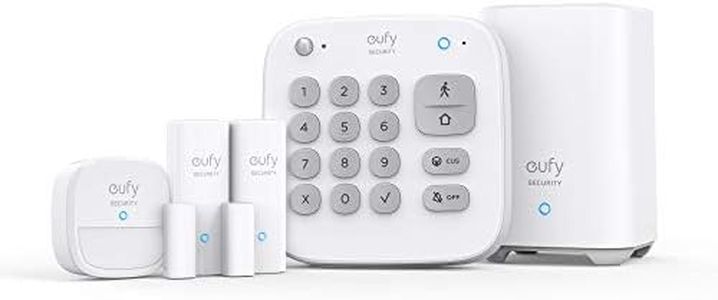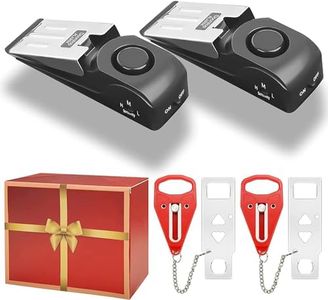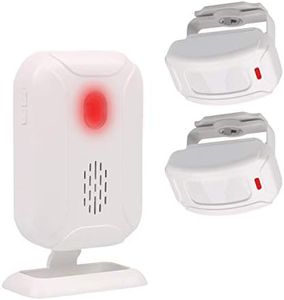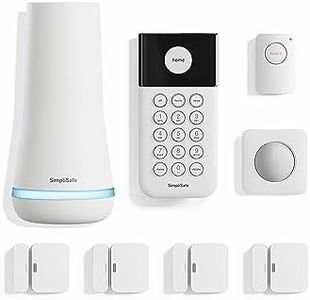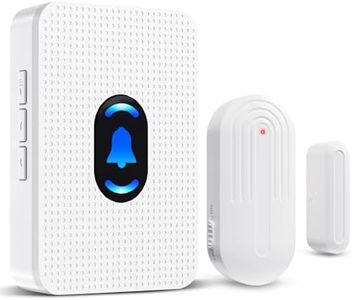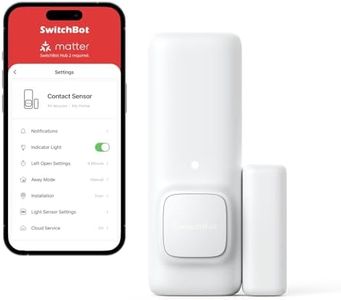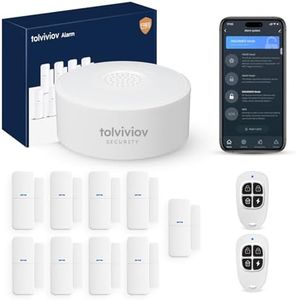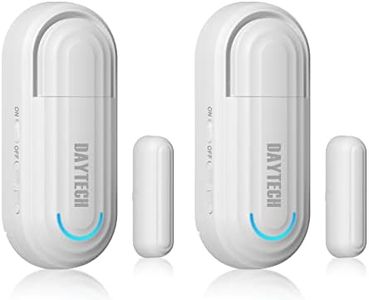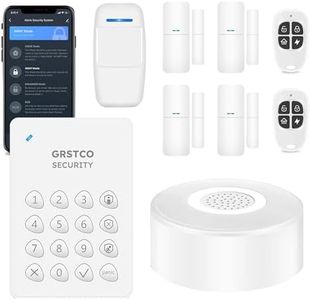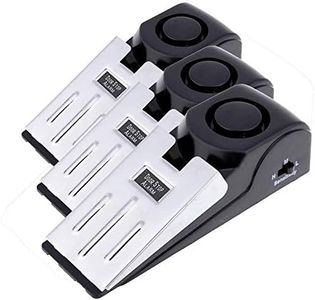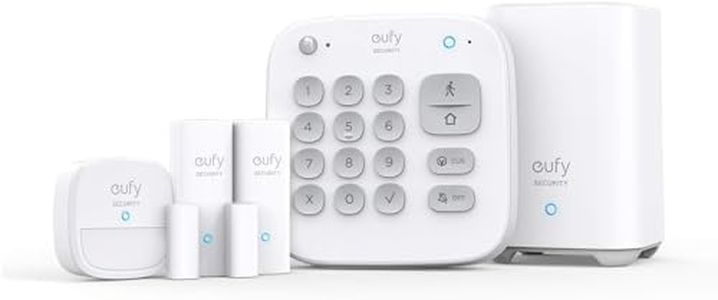We Use CookiesWe use cookies to enhance the security, performance,
functionality and for analytical and promotional activities. By continuing to browse this site you
are agreeing to our privacy policy
10 Best Door Alarms
From leading brands and best sellers available on the web.Buying Guide for the Best Door Alarms
When choosing a door alarm, it's important to focus on how the alarm will fit into your daily life and security needs. Door alarms are made to alert you when someone opens a door or tries to force entry. They provide an extra layer of security for your home, office, or any space you want to protect. To find the best fit, consider where you'll use the alarm, how you want to be notified, and how easy it is to use and install. By understanding the key features, you can pick a door alarm that keeps you, your family, or your belongings safe and gives you peace of mind.Alarm VolumeAlarm volume refers to how loud the door alarm will be when it is triggered. This is important because a louder alarm can scare off intruders and quickly alert people nearby to a problem. Volume levels are usually measured in decibels (dB). Quiet alarms (below 90 dB) are better for discreet alerts, such as letting you know when a child opens a door. Medium-volume alarms (90-110 dB) are good for general security without being overwhelming. Loud alarms (above 110 dB) are best for high-security needs or in large, noisy environments. Think about whether you want to deter thieves, warn family members, or simply keep track of comings and goings when deciding on volume.
Power SourceDoor alarms can be powered in different ways, mostly with batteries or by plugging into a wall outlet. Battery-powered alarms are portable and easy to install anywhere, but you'll need to check and replace batteries regularly. Plug-in alarms don’t require battery changes, but their placement depends on having a socket nearby. Some alarms offer both options for flexibility. If you want a hassle-free installation or plan to use the alarm in various locations, battery options may suit you. If you want continuous protection without monitoring batteries, a plug-in model works better.
Sensor TypeThe sensor is the part of the alarm that detects when a door is opened. The most common types are magnetic sensors, which trigger the alarm when the magnetic connection is broken as the door opens. Some alarms use vibration or motion sensors, which can detect forced entry or movements near the door. Magnetic sensors are highly reliable for normal openings and closings. Vibration and motion sensors might be better if you’re worried about someone forcing the door instead of just opening it. Think about your main concern—simple entry or forceful attempts—when picking the sensor type.
Notification MethodDoor alarms can alert you in different ways, such as loud sounds, flashing lights, or even notifications on your phone. Some basic alarms sound an alert on-site, while more advanced models can send texts or push notifications, allowing you to respond when you’re not home. If you often leave home and want to monitor things remotely, choose an alarm with mobile notifications. If you mostly need local alerts—for example, to keep kids from leaving the house—an audible alarm may be enough.
Ease of InstallationEase of installation describes how simple it is to set up the alarm on your door. Some alarms can be installed with just double-sided tape or screws in a few minutes, while others may require wiring or more complicated setup. If you prefer DIY and don’t want to use tools, look for peel-and-stick options. If you’re comfortable with tools or need a more permanent solution, screwing or wiring in may make sense. Consider your comfort level with installations and whether you’re renting or own your space.
Adjustable SettingsAdjustable settings let you control how and when the alarm works. This can include volume adjustment, choosing chime or alarm modes, or setting time delays before the alarm sounds. More adjustability gives you greater control and can make the alarm less annoying for everyday use while ensuring it protects when needed. Select an alarm with settings that fit your routine—like entry delays for when you come home or chime modes for monitoring children.
